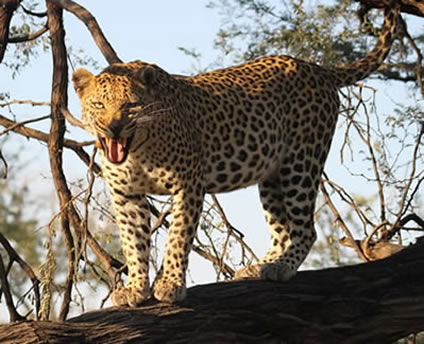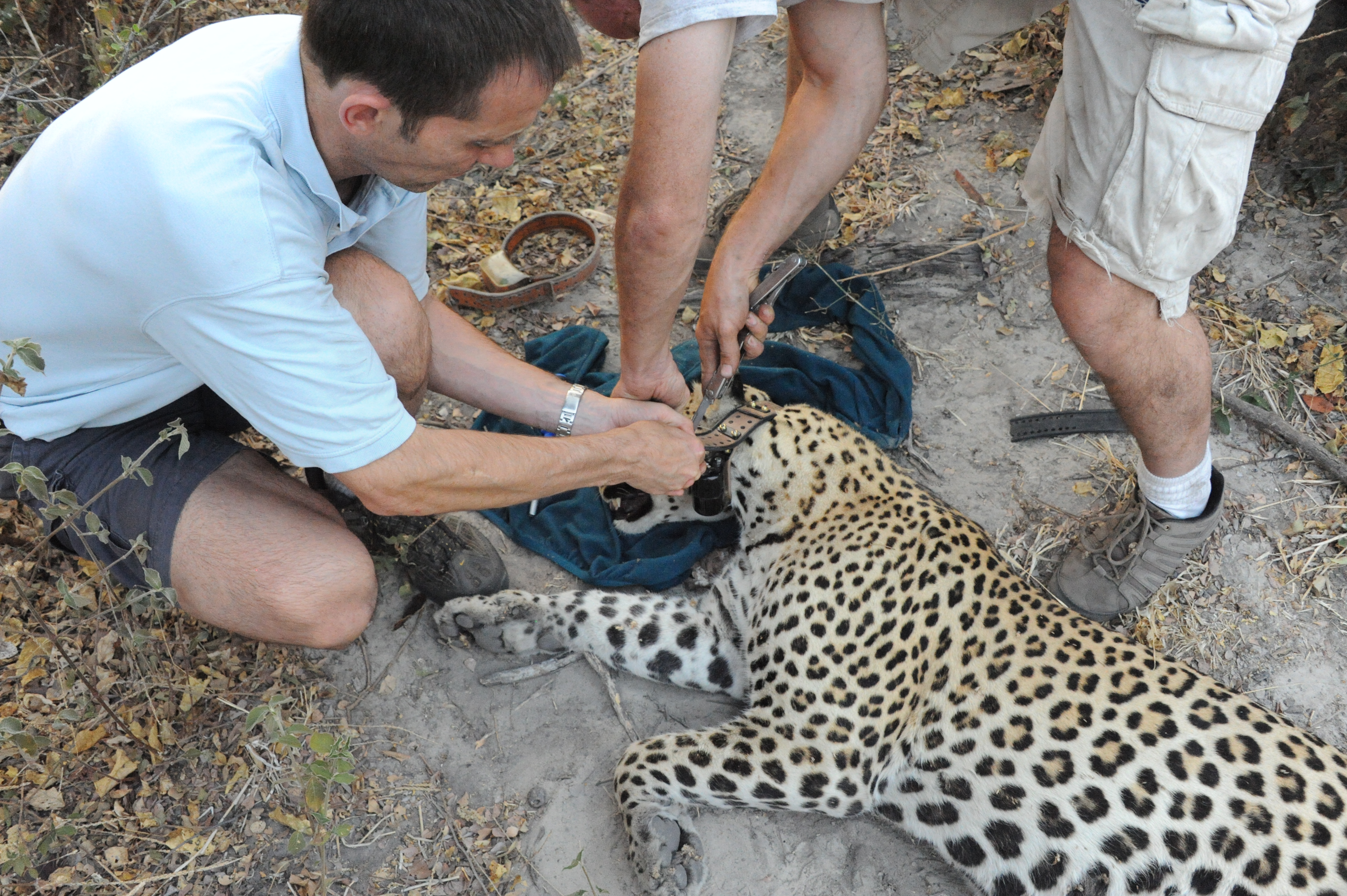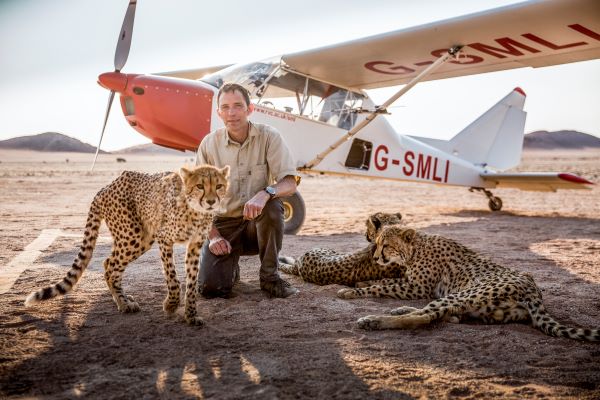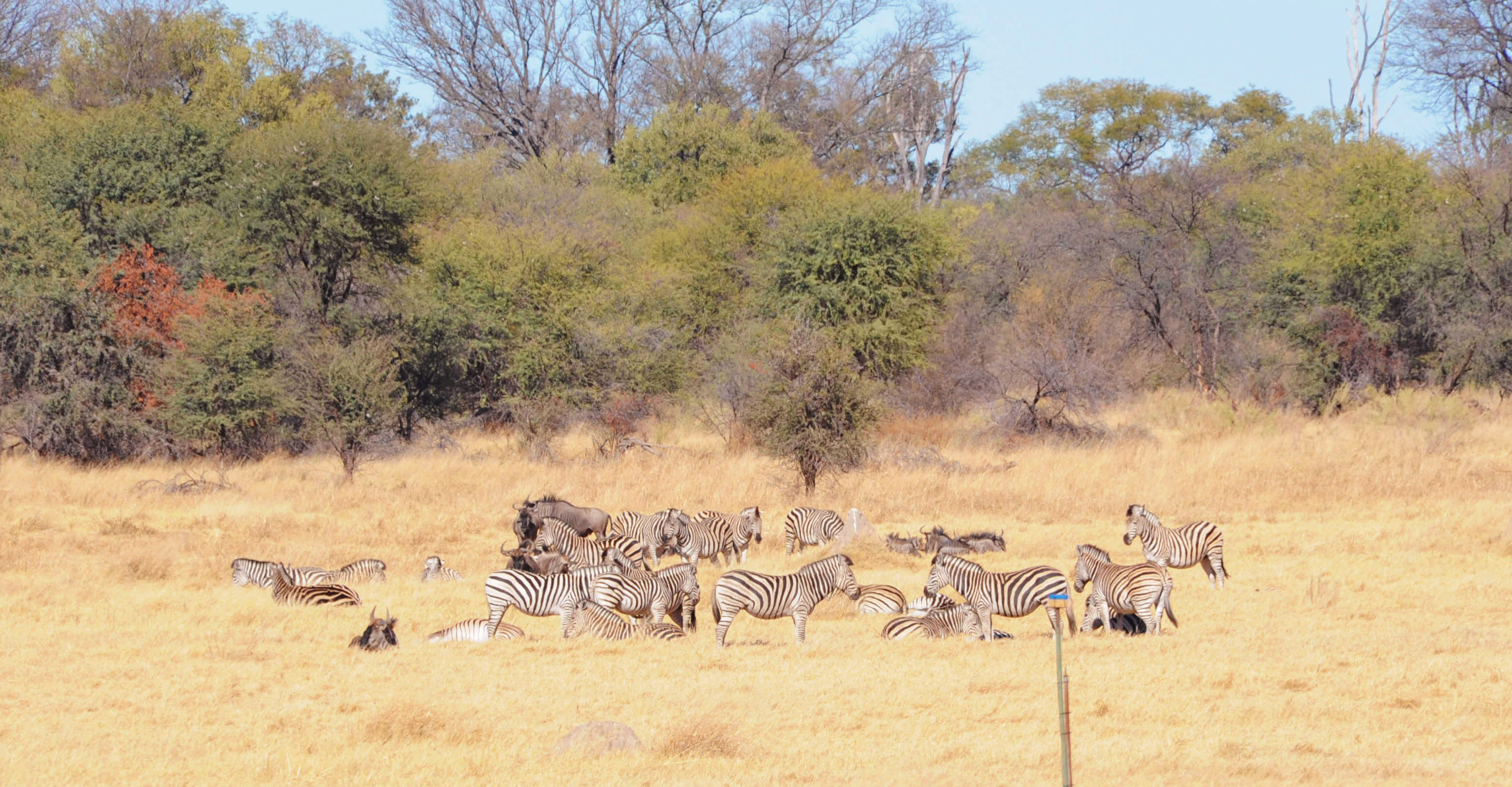
LOCATE: Locomotion, hunting and habitat utilisation among large African carnivores and their prey
LOCATE: Locomotion, hunting and habitat utilisation among large African carnivores and their prey

Challenge
The carnivores of the southern African savannah have no domestic counterparts and are at the extremes of performance in terms of speed, agility and strength. They are amongst the most threatened species in the world and yet there is much we do not know about them. At the beginning of this project, we did not know how the predators or their prey achieve the speed and manoeuvring required for the chase, what makes the difference between success and failure in hunting or how far the animals travel in a day or night and many other factors that may influence success and survival.
The LOCATE project, led by Professor Alan Wilson, addressed all of these questions in a single, cohesive study and has made discoveries that may contribute to the survival of endangered species and inventions that have the potential to change the way we study wild, free-ranging animals.
Objectives of the LOCATE project
- Determine the dynamics, mechanics and extent of economical and extreme locomotion in predator and prey using innovative technology
- Determine the muscle physiology including power and economy of muscle tissue from some of the same species using field measurements to characterise muscle environment (contraction speed, duty cycle at preferred speeds) and dissections to determine musculoskeletal arrangement
- Study locomotor behaviour and ecology from an energetic and ecological perspective: ranging cost, group hunting strategies, habitat use in relation to predation and hunting, locomotor strategies in response to limited resources (water, food)

Solution
Collars
Innovative collars we engineered (containing high accuracy GPS, accelerometers, gyroscopes and compasses) to record all aspects of the locomotion activity of the carnivores and their prey. The collars function for at least a year without human contact.
Aerial data collection
Two different aerial platforms give us the opportunity to collect data from the study animals with minimal disturbance, and to gather terrain and vegetation data from the study area. The first platform is our own research aeroplane, equipped with high-speed high-resolution video to automatically track and film hunting in action by ‘locking on’ to the GPS co-ordinates of the collar. Cameras and LiDAR from the plane produce detailed scans of the ground profile and vegetation.

Muscle studies
The primacy of highly adapted locomotor muscle performance for survival among these species makes them a fascinating subject of study. Certain predators in this study, such as leopards and lions, rely on stealth and extremely high muscle strength for prey capture. Cheetahs employ unequalled high speed and manoeuvrability to run down prey, requiring high muscle power/weight ratio. Prey, particularly those that migrate, need to be economical for day-to-day locomotor activity but also have anatomy and strategy to evade the full spectrum of predator athleticism. We want to find out how the arrangement and properties of the locomotor muscles in both predators and prey species reflect this specialisation/generalisation spectrum.
The study location
Most of the field research will be undertaken in Botswana. The study area is a 2,600km2 section in the wildlife management area of Northern Botswana adjacent to the Moremi Game Reserve. The area is characterised by mixed vegetation and habitat types including dry floodplains, large woodland areas and mopane shrubland. A full complement of indigenous wildlife species is present including 11 species of ungulates and 13 carnivores. All five of the large carnivores we wish to study are present here.

Impact
The study findings will be the first detailed data on the hunting and evasion capabilities of these species within a large predator-prey guild and will enable us to address important questions about differences in strategies and physical capabilities. The same data can be used to understand how the different species fit into their shared ecological niche. The non-invasive nature of the research means the findings accurately emulate normal behaviour, allowing ecologists to apply the results to a spectrum of study areas such as habitat management planning, migration, hunting and evasion strategies, and habitat use in predation and hunting. Muscle physiology study will characterise muscle properties such as contraction speed, muscle power and muscle efficiency. This will enable us to relate muscle level events to whole animal energetics and efficiency.
The findings of LOCATE research have been published in several papers. In addition, the team have presented at various UK and international meetings. Our most recent study investigating the relative athleticism of predators and their main prey has been published in Nature. A summary of the paper is available here, and the study has been picked up by media sources including the New York Times, BBC News, Seeker, Science News, Forbes, Gizmodo, MailOnline, Africa Times, and Phys.Org.
New findings reporting that human modification of landscapes reduces the ranging distance of wild mammals was recently published in Science. RVC researcher Hattie Bartlam-Brooks contributed data on zebra movement to complete the dataset of over 800 individual mammals across 57 species. This study highlights the importance of human impact on the ecosystem.
Partners
We thank the European Research Council for funding this research (Advanced Grant 323041).
Publications/Presentations
News / In the media
Tracking collars for BBC Horizon “The Secret Life of the Cat”
For the BBC Horizon programme “The Secret Life of the Cat”, the core technology from our Wildlife Collars – the GPS receiver, accelerometers, gyroscopes, CPU, and much of the associated software – was repackaged into a form that was small and light enough to be carried by a domestic cat. Core software functionality was retained, in particular the ability to change the collar’s operation and power consumption based on the cat’s behaviour, thus ensuring that the light-weight battery employed would still provide the required operating life.
Some of the domestic cat collars also carried a miniature high-definition video camera, which provided excellent video quality but only short recording time due to their limited battery life. To make best use of this finite recording time, the collars were programmed to only turn the camera on when the accelerometers indicated that the cat was active and the GPS receiver indicated that the cat was outdoors, thus maximising the amount of natural behaviour that was recorded.
Tracking collars featured in BBC One "Big Cats"
Our wildlife tracking collars made an appearance in Professor Alan Wilson's segment on the BBC One programme "Big Cats". Professor Wilson discussed his research into the locomotion dynamics of wild cheetahs as well as the technology developed at the RVC to collect data from free-ranging animals in the wild.
